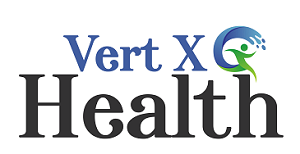
Finding Cerebral Palsy Resources
Definition of Cerebral Palsy
Cerebral palsy (CP) is a group of disorders that affect a person’s ability to move and maintain balance and posture. It’s the most common motor disability in childhood. CP is caused by abnormal brain development or damage to the developing brain that affects a person’s ability to control their muscles. These disorders are permanent, but not progressive, meaning they don’t get worse over time. The symptoms of CP can vary widely. Some people with CP might have difficulty walking, while others might have intellectual disabilities, seizures, or vision problems. It’s important to understand that CP is not a single disease, but rather a collection of conditions with similar effects on movement and coordination.
Types of Cerebral Palsy
There are several different types of cerebral palsy, classified based on the type of movement disorder involved. Spastic CP is the most common type, affecting about 80% of people with CP. It’s characterized by increased muscle tone, resulting in stiff movements. Dyskinetic CP involves problems controlling movement, leading to involuntary movements that can be slow and writhing or rapid and jerky. Ataxic CP affects balance and coordination, causing shaky movements and difficulty with tasks like writing or buttoning a shirt. Mixed CP means a person has symptoms of more than one type. Knowing the specific type of CP is important for developing an appropriate treatment plan. It’s not always easy to classify, and sometimes it takes time to get a clear diagnosis.
Common Causes and Risk Factors
Cerebral palsy can result from a variety of factors that affect brain development before, during, or shortly after birth. In many cases, the exact cause is unknown. However, some known risk factors include premature birth, low birth weight, and infections during pregnancy. Brain injuries during delivery, such as those caused by oxygen deprivation, can also lead to CP. Genetic abnormalities and certain medical conditions in the mother can increase the risk as well. It’s important to note that having one or more risk factors doesn’t guarantee a child will develop CP, and many children with CP have no identifiable risk factors. Understanding these factors can help doctors and parents be more vigilant and take steps to minimize potential risks when possible. Here are some of the common causes and risk factors:
- Premature birth
- Low birth weight
- Infections during pregnancy
- Brain injuries during delivery
Government Assistance Programs
Medicaid and Medicare Benefits
Government assistance can be a real lifeline for families dealing with cerebral palsy. Medicaid, for instance, provides health coverage to many low-income individuals and families. Eligibility requirementsrecovery assistance vary by state, so it’s important to check the specific rules where you live. Medicaid can cover doctor visits, hospital stays, therapies, and even some assistive devices. Medicare, on the other hand, is generally for people 65 or older, or those with certain disabilities, regardless of income. It’s worth looking into both to see what kind of support they can offer.
Social Security Disability Insurance
Social Security Disability Insurance (SSDI) is another key program. It provides financial assistance to individuals who are unable to work due to a disability. To qualify, a person needs to have worked for a certain amount of time and paid Social Security taxes. The amount of the benefit depends on the person’s earnings history. Applying can be a bit of a process, but it can make a big difference in managing the costs associated with cerebral palsy. It’s a good idea to gather all medical records and documentation before starting the application.
State-Specific Programs
Don’t forget to check out what your state offers! Many states have their own programs designed to help people with disabilities. These can include:
- Cash assistance programs
- Housing assistance
- In-home support services
These programs can really fill in the gaps where federal programs might fall short. A quick search on your state’s government website can usually turn up a list of available resources. It’s all about finding the right combination of support to meet your family’s needs.
Nonprofit Organizations and Support Groups
National Cerebral Palsy Foundation
The National Cerebral Palsy Foundation (NCPF) stands as a pillar of support for individuals and families affected by cerebral palsy. It’s a place where you can find resources, information, and a community that understands what you’re going through. They have programs aimed at improving the quality of life for people with CP, from early intervention to adulthood. The NCPF also advocates for the rights of individuals with cerebral palsy, working to create a more inclusive society. They offer:
- Information on treatment options
- Advocacy resources
- Community support programs
Local Support Networks
Finding a local support network can make a huge difference. These groups provide a space for families to connect, share experiences, and learn from each other. It’s not always easy to find these networks, but they’re worth the effort. Local support groups often organize events, workshops, and activities that can benefit both individuals with cerebral palsy and their families. They can also provide practical advice on navigating local resources and services. Consider these avenues for finding local support:
- Check with local hospitals and clinics.
- Contact regional disability organizations.
- Search online directories for support groups in your area.
Online Communities and Forums
In today’s digital age, online communities and forums offer a convenient way to connect with others affected by cerebral palsy. These platforms provide a space for sharing information, asking questions, and finding emotional support. It’s like having a virtual support group available 24/7. However, it’s important to be mindful of the information shared online and to verify its accuracy. For women and families affected by traumatic birth experiences, BTA support is available.
Some popular online resources include:
- Cerebral Palsy Alliance Community
- Facebook groups dedicated to CP support
- Online forums focused on disability-related issues
Educational Resources for Families
Special Education Services
Navigating the educational system can be tough, especially when your child has special needs. The Individuals with Disabilities Education Act (IDEA) is a federal law that makes sure children with disabilities get free appropriate public education (FAPE) tailored to their individual needs. This includes things like:
- Individualized Education Programs (IEPs): These are plans created by a team, including parents and educators, that outline specific goals and services for the child.
- Evaluations: Schools must evaluate children to see if they have a disability and what kind of help they need.
- Related Services: This can include things like speech therapy, occupational therapy, and counseling.
It’s important to know your rights and what the school is required to provide.
Advocacy for Educational Rights
Sometimes, getting the right educational support means advocating for your child’s rights. This can involve:
- Understanding the laws: Knowing IDEA and other relevant laws is key.
- Communicating with the school: Keep the lines of communication open with teachers, administrators, and other staff.
- Seeking outside help: There are organizations that can help you advocate for your child’s rights, like disability rights groups.
Don’t be afraid to ask questions and push for what your child needs. It’s okay to be a squeaky wheel.
Resources for Learning and Development
Beyond the classroom, there are tons of resources to support your child’s learning and development. Consider these options:
- Online learning platforms: Many websites and apps offer educational games and activities.
- Community programs: Look for local programs that offer tutoring, mentoring, or other support services.
- Therapeutic interventions: Depending on your child’s needs, therapies like speech or occupational therapy can help with learning and development.
Remember, learning happens everywhere, not just in school. Find what works best for your child and make it fun!
Financial Assistance and Grants
Securing financial aid can significantly ease the burden on families caring for children with cerebral palsy. Many avenues exist to explore options for financial support. It’s important to research and apply for all applicable programs.
Disability Grants and Scholarships
Disability grants and scholarships can provide funds for various needs, including medical expenses, therapy, and adaptive equipment. Several organizations offer grants specifically for individuals with disabilities. Eligibility criteria vary, so thorough research is essential. For example, the Patient Advocate Foundation offers small grants to patients who meet certain financial and medical requirements. It’s worth checking out what’s available.
Crowdfunding Options
Crowdfunding platforms have become a popular way to raise money for medical expenses and other needs. Platforms like GoFundMe allow families to share their stories and solicit donations from friends, family, and the wider community. Some tips for successful crowdfunding include:
- Crafting a compelling story
- Sharing updates regularly
- Expressing gratitude to donors
Charitable Organizations Offering Financial Aid
Numerous charitable organizations provide financial assistance to families affected by cerebral palsy. These organizations may offer grants for specific purposes, such as:
- Medical treatment
- Assistive technology
- Home modifications
It’s a good idea to check out local charities as well as national ones. They might have programs you haven’t heard of yet.
Legal Resources for Birth Injury Cases
Finding a Birth Injury Attorney
When a child suffers a birth injury, securing appropriate legal representation is really important. Families need to find attorneys who not only understand the complexities of medical malpractice but also have specific experience with birth injury cases. It’s more than just knowing the law; it’s about understanding the medical aspects and the potential long-term impact on the child and family.
Here are some steps to consider:
- Start by researching attorneys who specialize in birth injury cases. Look for lawyers with a proven track record of success in similar cases.
- Check online reviews and testimonials. See what other families have to say about their experiences with different attorneys.
- Schedule consultations with several attorneys. Most offer free initial consultations, which is a good chance to ask questions and assess their suitability.
Understanding Your Legal Rights
Navigating the legal landscape after a birth injury can feel overwhelming. It’s important for families to understand their rights and the legal options available to them. This includes knowing the statute of limitations for filing a claim, which varies by state, and understanding the types of damages that can be recovered. Damages might include medical expenses, ongoing care costs, lost income (if a parent has to quit their job to care for the child), and compensation for the child’s pain and suffering.
Key things to keep in mind:
- The importance of gathering all relevant medical records and documentation related to the birth and the child’s subsequent care.
- The need to understand the legal concept of negligence and how it applies to medical professionals in birth injury cases.
- The potential for pursuing a settlement or taking the case to trial, depending on the circumstances.
Resources for Legal Aid
Access to legal representation shouldn’t be limited by financial constraints. Several resources are available to help families who can’t afford an attorney. These resources can provide guidance, support, and even direct legal representation.
Consider these options:
- Legal aid societies: Many states and local areas have legal aid societies that offer free or low-cost legal services to eligible individuals and families.
- Pro bono programs: Some attorneys and law firms offer pro bono services, meaning they provide legal assistance for free to those in need.
- Nonprofit organizations: Certain nonprofit organizations specialize in advocating for the rights of individuals with disabilities and may offer legal assistance or referrals to qualified attorneys.
Therapeutic and Medical Resources
Physical and Occupational Therapy
Physical and occupational therapy are cornerstones in managing the effects of cerebral palsy. Physical therapy focuses on improving motor skills, strength, and mobility. It’s about helping individuals achieve the highest possible level of independence. Occupational therapy, on the other hand, addresses daily living skills. It helps people adapt to their environment and perform everyday tasks.
Think of it this way:
- Physical therapy might involve exercises to improve walking or balance.
- Occupational therapy could focus on learning how to dress or eat independently.
- Both therapies often work together to create a holistic treatment plan.
These therapies are often tailored to the individual’s specific needs and abilities. It’s not a one-size-fits-all approach. Finding the right therapist is key. They should have experience working with individuals with cerebral palsy.
Speech Therapy Resources
Speech therapy is another critical component of care. Many individuals with cerebral palsy experience difficulties with speech, language, and communication. Speech therapy can help improve articulation, fluency, and voice control. It can also address feeding and swallowing difficulties.
Here’s what speech therapy might involve:
- Exercises to strengthen the muscles used for speech.
- Strategies for improving communication skills.
- Techniques for safe and effective feeding.
It’s not just about talking. It’s about communicating effectively. Speech therapists can also help individuals learn to use assistive communication devices. These devices can be a game-changer for those who have limited verbal abilities. If you are looking for expert support, there are many resources available.
Assistive Technology Options
Assistive technology plays a huge role in enhancing the lives of individuals with cerebral palsy. It encompasses a wide range of devices and tools. These tools help people overcome challenges and participate more fully in daily life.
Some examples include:
- Mobility aids, such as wheelchairs and walkers.
- Communication devices, like speech-generating devices.
- Adaptive equipment for activities like eating, dressing, and writing.
The goal of assistive technology is to promote independence and improve quality of life. It’s about finding the right tools to meet individual needs. The options are constantly evolving, so it’s important to stay informed about the latest advancements. It can be overwhelming to navigate all the available options, but it’s worth the effort to find what works best.






